Abstract
Energy metabolism of healing tissue was studied in experimental wounds of rats chronically breathing 11% O2, air or 55% O2. Increasing oxygen supply elevated both PO2 and PCO2 in the wound tissue. At the early phases of healing hypoxic wounds contained less DNA than normoxic or hyperoxic tissues. In hypoxia the accumulation of wound collagen was clearly retarded. Furthermore, tissue taken from wounds healing in hypoxic environments and tested ex vivo in air showed decreased capacity for glucose utilization, lactate production and oxygen consumption. Concentrations of AMP, ADP and ATP in repair tissue increased as healing progressed. The more oxygen available the higher the amounts of ADP and ATP. The AMP content was not affected by changes in local oxygen tension. These results support the earlier concept that the supply of oxygen in healing tissue may be rate-limitimg. Reduction of available oxygen either by systemic hypoxia or by increased diffusion distance impedes healing.
Full text
PDF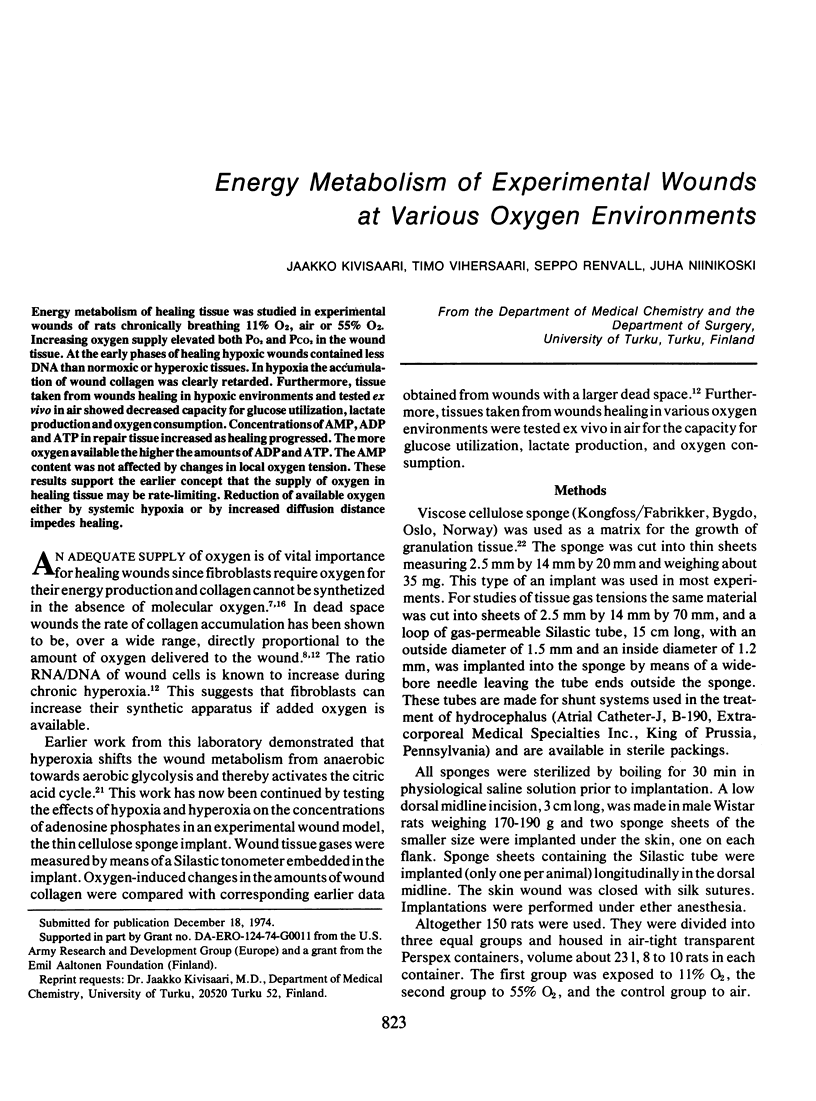
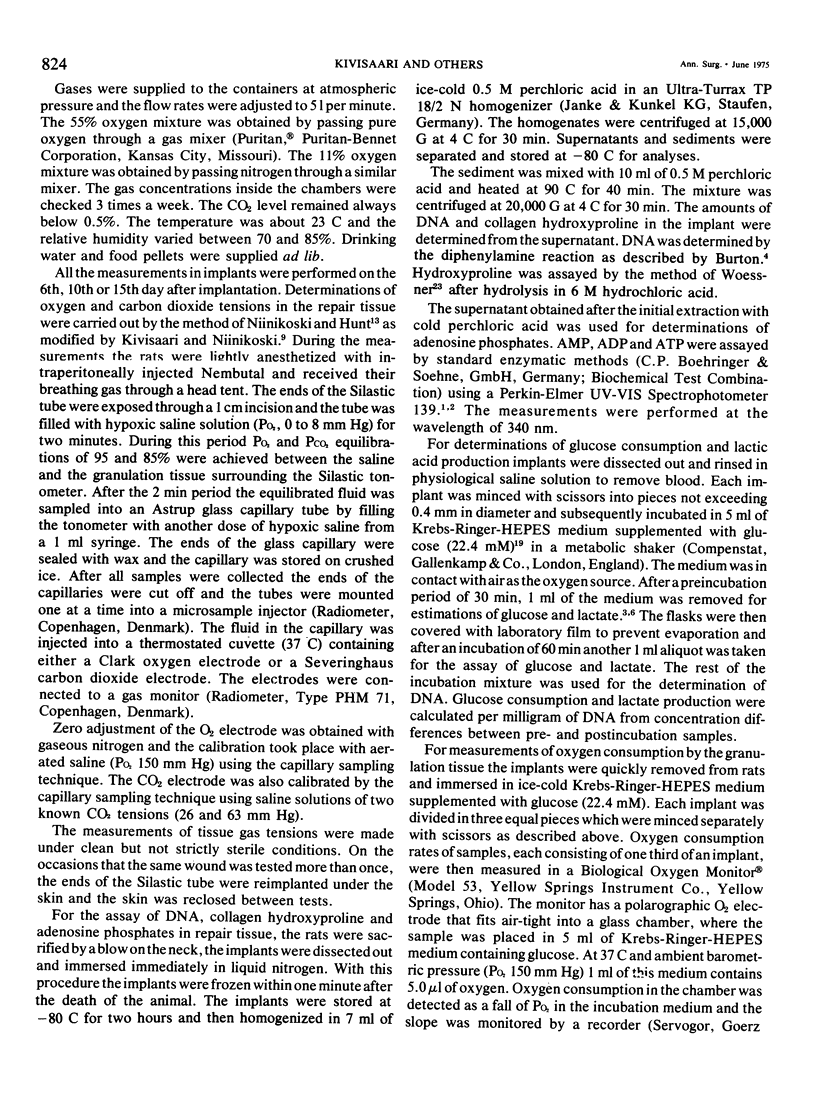

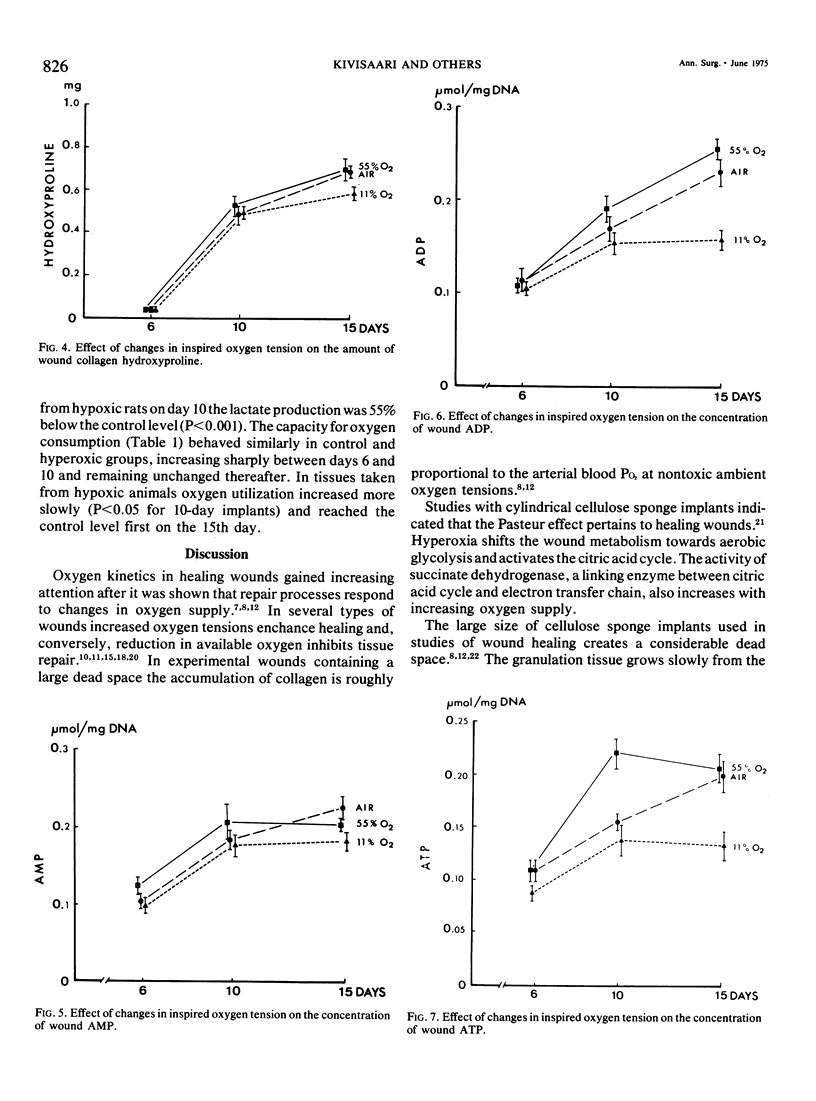
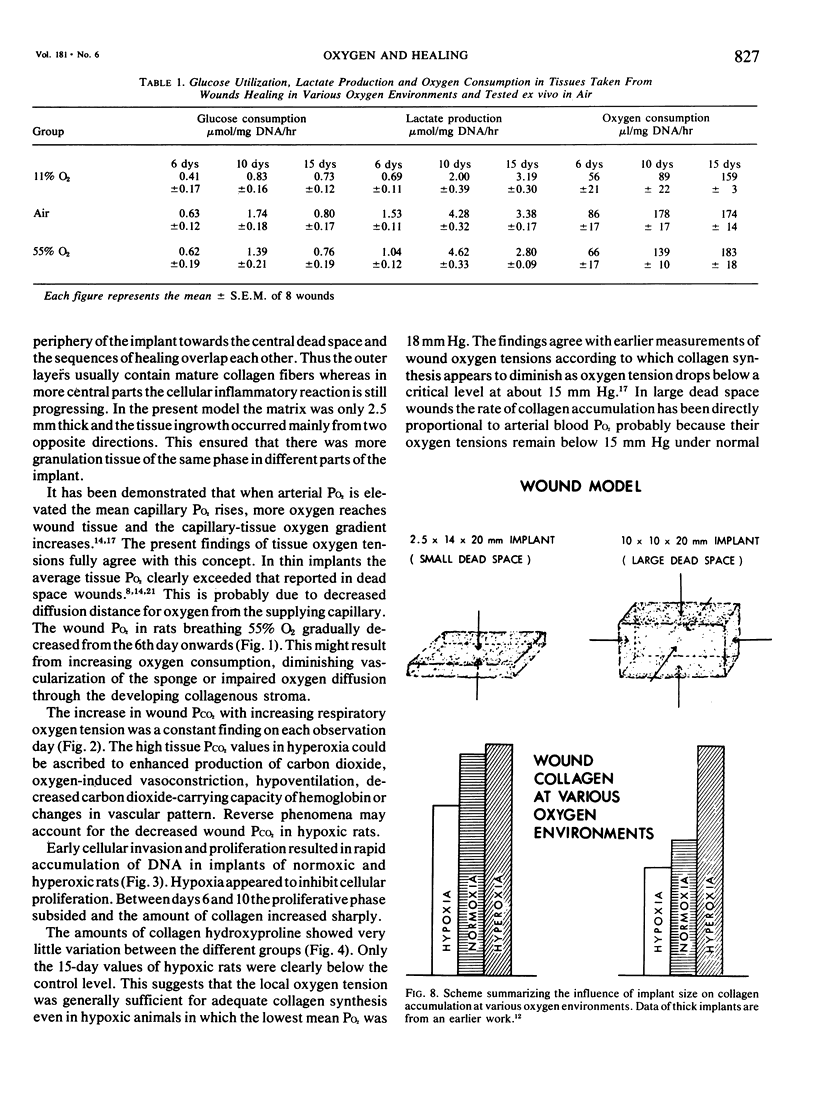
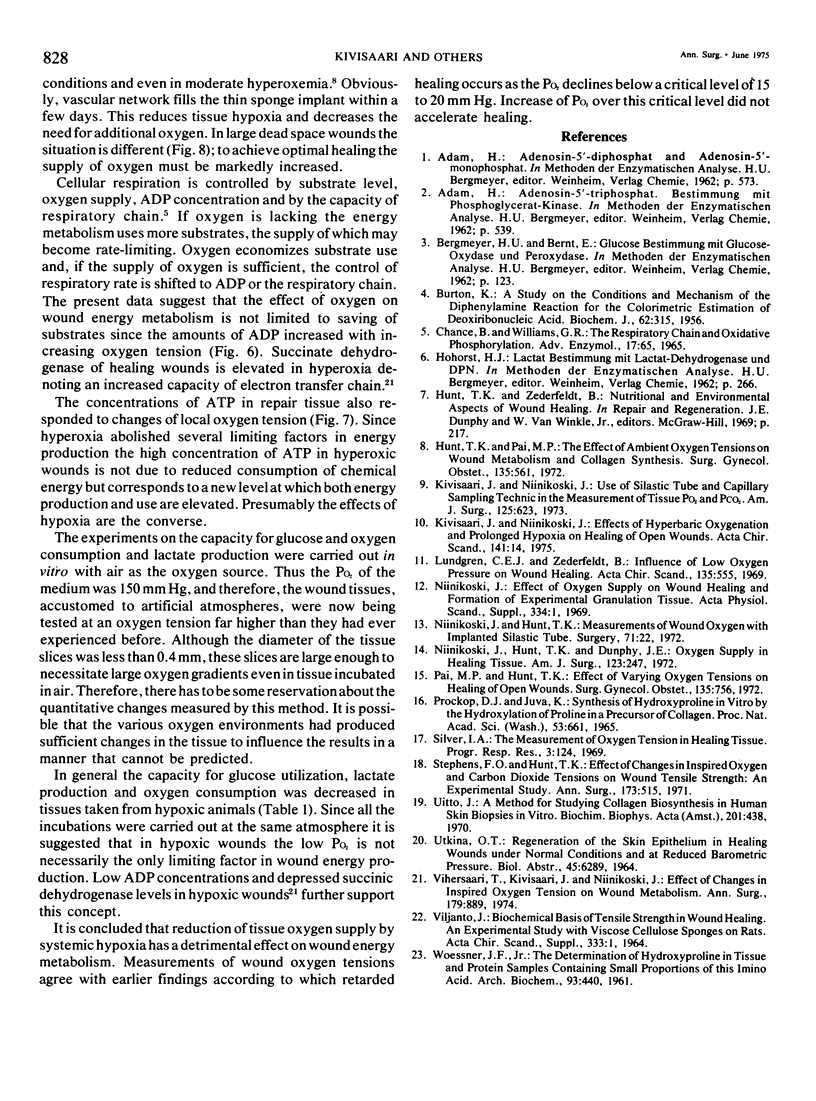
Selected References
These references are in PubMed. This may not be the complete list of references from this article.
- BURTON K. A study of the conditions and mechanism of the diphenylamine reaction for the colorimetric estimation of deoxyribonucleic acid. Biochem J. 1956 Feb;62(2):315–323. doi: 10.1042/bj0620315. [DOI] [PMC free article] [PubMed] [Google Scholar]
- CHANCE B., WILLIAMS G. R. The respiratory chain and oxidative phosphorylation. Adv Enzymol Relat Subj Biochem. 1956;17:65–134. doi: 10.1002/9780470122624.ch2. [DOI] [PubMed] [Google Scholar]
- Kivisaari J., Niinikoski J. Effects of hyperbaric oxygenation and prolonged hypoxia on the healing of open wounds. Acta Chir Scand. 1975;141(1):14–19. [PubMed] [Google Scholar]
- Kivisaari J., Niinikoski J. Use of silastic tube and capillary sampling technic in the measurement of tissue PO 2 and PCO 2 . Am J Surg. 1973 May;125(5):623–627. doi: 10.1016/0002-9610(73)90149-9. [DOI] [PubMed] [Google Scholar]
- Lundgren C. E., Zederfeldt B. H. Influence of low oxygen pressure on wound healing. Acta Chir Scand. 1969;135(7):555–558. [PubMed] [Google Scholar]
- Niinikoski J., Hunt T. K., Dunphy J. E. Oxygen supply in healing tissue. Am J Surg. 1972 Mar;123(3):247–252. doi: 10.1016/0002-9610(72)90277-2. [DOI] [PubMed] [Google Scholar]
- Ninikoski J., Hunt T. K. Measurement of wound oxygen with implanted Silastic tube. Surgery. 1972 Jan;71(1):22–26. [PubMed] [Google Scholar]
- PROCKOP D. J., JUVA K. SYNTHESIS OF HYDROXYPROLINE IN VITRO BY THE HYDROXYLATION OF PROLINE IN A PRECURSOR OF COLLAGEN. Proc Natl Acad Sci U S A. 1965 Mar;53:661–668. doi: 10.1073/pnas.53.3.661. [DOI] [PMC free article] [PubMed] [Google Scholar]
- Pai M. P., Hunt T. K. Effect of varying oxygen tensions on healing of open wounds. Surg Gynecol Obstet. 1972 Nov;135(5):756–758. [PubMed] [Google Scholar]
- Uitto J. A method for studying collagen biosynthesis in human skin biopsies in vitro. Biochim Biophys Acta. 1970 Mar 24;201(3):438–445. doi: 10.1016/0304-4165(70)90163-7. [DOI] [PubMed] [Google Scholar]
- Vihersaari T., Kivisaari J., Ninikoski J. Effect of changes in inspired oxygen tension on wound metabolism. Ann Surg. 1974 Jun;179(6):889–895. doi: 10.1097/00000658-197406000-00012. [DOI] [PMC free article] [PubMed] [Google Scholar]
- WOESSNER J. F., Jr The determination of hydroxyproline in tissue and protein samples containing small proportions of this imino acid. Arch Biochem Biophys. 1961 May;93:440–447. doi: 10.1016/0003-9861(61)90291-0. [DOI] [PubMed] [Google Scholar]


